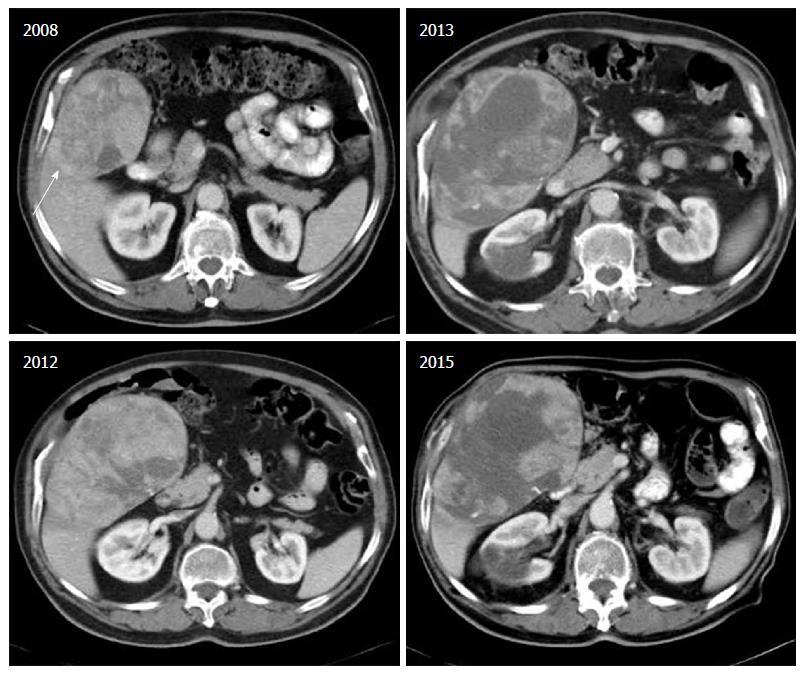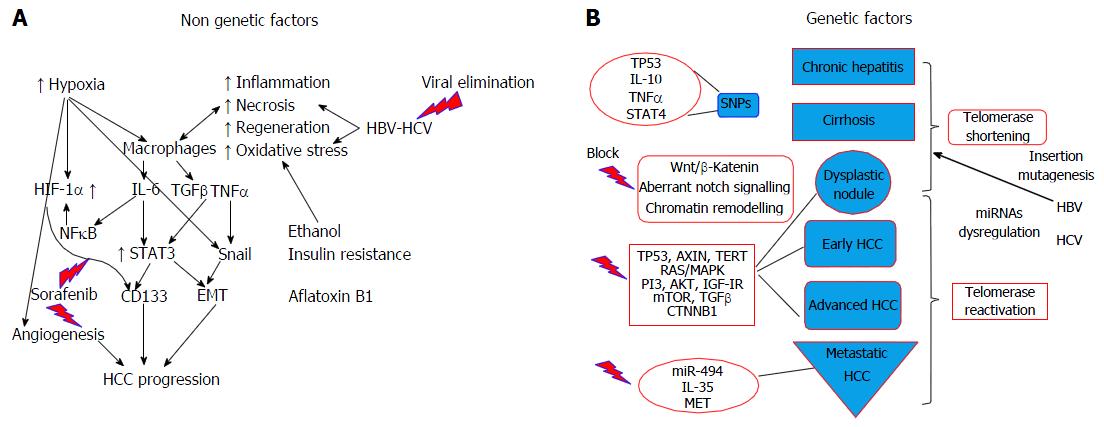Copyright
©The Author(s) 2017.
Figure 1 Serial computed tomography scans of a hepatocellular carcinoma patient with multiple co-morbidities precluding radical treatment, surviving 7 years with sequential approach in systemic treatment (Octreotide long acting release, followed by sorafenib).
Despite an increase in tumor size, it is evident the central necrosis related to Sorafenib treatment (which was commenced when it became available).
Figure 2 Interplay between genetic and non-genetic factors in the pathogenesis of hepatocellular carcinoma.
Potential treatment targets. Hepatocellular carcinoma (HCC) is a complex entity with multifactorial pathogenesis. Control of non-genetic factors (A) (e.g., viral elimination, inhibition of CD133 positive cancer cell overexpression) may lead to alteration of the progress from cirrhosis to HCC. On the other hand, the various genetic irregularities (B) may lead to different HCC profiles with respect to invasiveness (miR-494) or response to treatment. New targeted treatments are also directed against Wnt/β-katenin. HBV: Hepatitis B virus; HCV: Hepatitis C virus; HIF-1α: Hypoxia-inducible factor 1 alpha; TNF: Tumor necrosis factor; IL-6: Interleukin-6; NFκΒ: Nuclear factor-kappa B.
- Citation: Samonakis DN, Kouroumalis EA. Systemic treatment for hepatocellular carcinoma: Still unmet expectations. World J Hepatol 2017; 9(2): 80-90
- URL: https://www.wjgnet.com/1948-5182/full/v9/i2/80.htm
- DOI: https://dx.doi.org/10.4254/wjh.v9.i2.80














